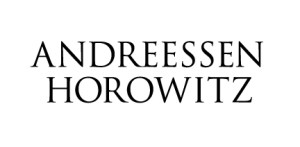 I guess $1 billion under management just wasn’t enough. Andreessen Horowitz has just announced a new growth fund of $200 million. The fund with co-invest alongside the firm’s most recent $650 million fund, providing more capital for the kinds of late stage deals that have been raging in the Valley of late. (Check out our three part series on the trend here, here and here.)
I guess $1 billion under management just wasn’t enough. Andreessen Horowitz has just announced a new growth fund of $200 million. The fund with co-invest alongside the firm’s most recent $650 million fund, providing more capital for the kinds of late stage deals that have been raging in the Valley of late. (Check out our three part series on the trend here, here and here.)
That “co-invest” part is makes this announcement very different from other firms’ late stage funds, says general partner John O’Farrell. “This is not Fund III. This is a completely discretionary fund that gives us more firepower to invest in great high-quality, high-growth companies along with Fund II, but there is no obligation to do so,” he says. In other words, the firm may invest all of the $200 million, none of it or somewhere in between. At the end of Fund II, it goes away no matter how much is left.
And this may be the biggest distinction from other growth funds: Andressen Horowitz is not charging investors any management fees associated with this fund. “We wanted to be completely aligned with investors,” O’Farrell says. “If it’s truly a discretionary fund, we should not be charging management fees on it. We would be doing that due diligence work anyway since this co-invests with Fund II. Why double up on the fees?” (Big points scored with the firm’s limited partners there, and a big message sent to other firms. Fees on growth funds are one of the most contentious issues in the industry today.)
Notable late stage investments made so far by Andreessen Horowitz include Skype, Zynga, Facebook, Twitter and most-recently Jawbone. There are more details in a guest post by O’Farrell on Ben Horowitz’s blog. (Come on, guys! Can’t O’Farrell get his own blog?)
We spoke with O’Farrell about what opportunities are still out there now that the big social media plays like Facebook, Twitter, Zynga and Groupon are plied full of late-stage cash. O’Farrell obviously didn’t want to name names of deals that aren’t yet done, but he pointed to two existing portfolio companies as examples: Jawbone and Box.Net. One is a consumer products company and one is an enterprise company; two industries that can require large amounts of growth capital to go truly mainstream. “They aren’t household names yet, but we believe they will be,” O’Farrell says. Another promising vertical is e-commerce, he said.
He drew a distinction between “high-growth” and “high-quality,” saying the firm turns down companies that are merely growing quickly all the time if they don’t have a stellar management team and a truly global market opportunity. He also noted that profitability wasn’t necessarily a requirement. “A company may well still be losing money if they are investing very heavily in marketing, but as long as we can see the lifetime value of a customer is greater than the cost of acquiring them, that’s fine,” he says.